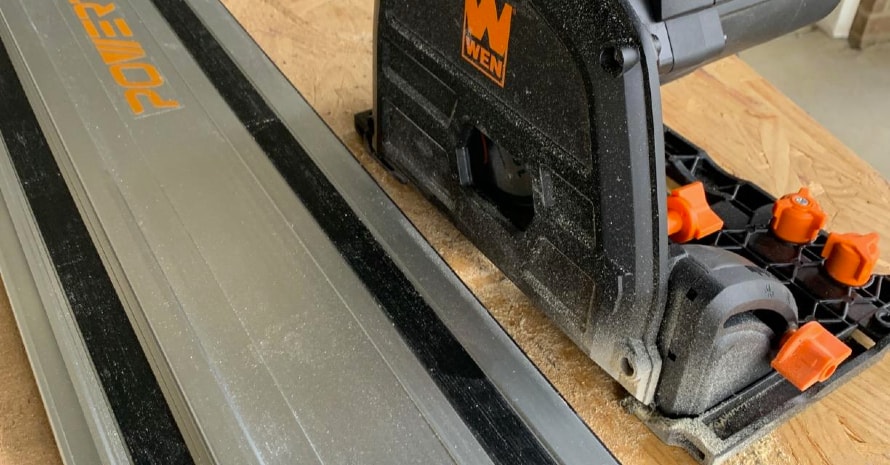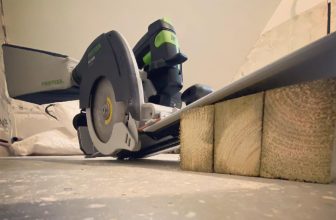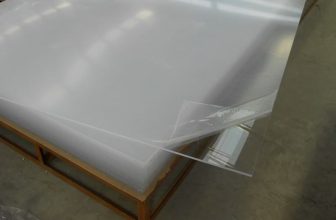How to Cut Plywood with a Circular Saw: Newbie’s Guide
Whether you already know a thing or two about woodworking or are just at the beginning of your journey, you’re very likely to face the question sooner or later: how do you cut plywood? Is there a special plywood saw, or is it possible to accomplish the task with a circular one?
Indeed, circular saws belong to the most versatile tools in the woodworker’s toolbox. Their applications are numerous and include a wide variety of materials, and plywood is no exception. In this article, I’ll share with you some life hacks for cutting plywood without splintering with an ordinary circular saw.
Contents
Plywood Cutting Guide: Circular Saw Edition
Cutting plywood with a circular saw is possible. Use long lumber to support the sheet and put it with the best side facing down, and you’ll make a clean cut safely. A plywood circular saw blade should be a carbide model with a high number of teeth.
How to Cut Plywood with a Circular Saw Step by Step
Here’s a beginner-friendly guide to cutting plywood without splintering and producing smooth, perfectly straight, and accurate cuts with a generic circular saw.
There are multiple factors that determine the overall success of the operation. From the setting in which you are cutting to the blade to how you move it and a lot in between, everything can have an impact, so be sure to follow the steps below in order to cut safely and efficiently.
Set up your workstation
Circular saws come in all shapes and colors; they can be bigger or smaller, hand-held or portable. You don’t need to invest in a dedicated circular saw in order to cut plywood; rather, it’s a versatile tool that you can rely on in absence of a more specialized solution. No matter which version you have, you need to work in an appropriate setting.
Support is key. One option is using sawhorses, a structure that supports the board while you’re sawing it, ensuring stability and user comfort. If you don’t have one and don’t feel like adding anything to your workshop right now, try cutting on foam. A sheet of reasonably hard foam will give you the resistance and stabilization you need.
It’s also essential that you have enough room for maneuver when operating a circular saw. Always work in brightly lit places to ensure decent visibility; not only does this improve your experience as a woodworker but enhances your safety (see below for more tips on that).
Choose the right blade
I’m afraid your kit blade that came with your saw when you bought it isn’t really likely to cut it (pun not intended) when it comes to plywood. It’s worth investing in one made of really tough material, such as a carbide-tipped one.
Blade diameter matters quite apart from its material. The smaller it is, the better, but you usually have to choose based on your saw’s specifications since blades are made to fit the tool.
Another vital factor is tooth count, which determines the speed at which the blade will move as well as how gentle a cut it can make. Generally, blades with more teeth make smoother cuts and are better for plywood.
Take anti-splintering measures
Splintering is a common problem with plywood. There are several ways in which you can mitigate it, such as cutting it with the pretty face down and/or using masking tape to minimize the risk. Take a look at the Tips for a Smooth Cut section below for more tips and tricks on how you can avoid splintering.
Cut it!
Remember to lower the blade to a depth at which it protrudes to about ¼ inch below the lower surface of the board. Now it’s time to cut. Use a circular saw guide for improved accuracy, and beware of kickbacks.

Safety Tips
Circular saws are not the safest tools out there, so you need to observe the safety rules when working with one. Most of these rules are common sense. I do insist you don’t underestimate them, though.
- Do not carry your portable circular saw around unless it has a guard on. Guards are a must on such tools as they help prevent injuries;
- Use prolonged lumber to support the board to prevent binding and, therefore, kickbacks;
- Never place your hand under the shoe/guard of the saw;
- Always protect your face with goggles or a safety shield;
- Consider using hearing protection if the place gets noisy;
- Wait for the saw to reach full power before making the first cut;
- Remember to disconnect the saw from the power supply before adjusting the blade.
Tips for a Smooth Cut
With plywood, precise and smooth cuts are achievable if you use a high-tooth-count blade and cut the board with its finished face down. There are also additional anti-splintering measures that you might want to consider, such as applying masking tape along the cut line (this also helps precision while preventing splintering). Taping is especially important in the context of crosscuts, which is cutting across the grain of the wood.
The safety requirement that you mustn’t lower the blade until it’s reached full speed also has an implication in terms of the cut quality. You’ll never produce a crystal-clean cut if you don’t have the patience to wait.
You can try and use a sharp utility knife to score along the cut line before you actually make a cut, too. This technique can bring the appearance of your cuts to a whole new level and is especially popular in situations where you can’t compromise the appearance of either side of the board.
FAQ
In this section, I will try to answer some questions that often arise when it comes to ripping plywood with a circular saw as well as making crosscuts in a nutshell. You’re welcome to add your comments in the comments section if you want to share your experience with this tool and material combination.
How to cut laminated plywood with a circular saw?
Opt for the blade with a high number of teeth and a small diameter. This might slow you down a bit because it’s usually blades with fewer teeth that are the speediest, but such models produce smoother cuts. Moreover, a low cutting speed favors delicate materials that splinter easily.
You can try placing adhesive tape in the place where you are going to cut along the imaginary cutline to protect the surface further. When done, just take the tape off at a straight angle to the sheet.
How to cut plywood straight with a circular saw?
One important component of a straight cut in plywood is the right blade. A carbide-tipped model that’s small and has a lot of teeth is the most likely candidate. Apart from that, remember to adjust its depth so that it protrudes to 0.25 inches below the level of the foil when you cut the sheet.
Remember that it’s essential to prevent binding. Cutting 4×8 plywood with a circular saw will definitely require you to use four pieces of long lumber as support. Place two pieces near the outer edges of the sheet and two on either side of the cutline.
How to keep the plywood from splintering?
The simplest solution is to always place the sheet of plywood with its better side facing down. That’s not exactly the answer to how to rip plywood with a circular saw without splintering, but that’s enough in many cases.
With crosscuts, you can try putting adhesive masking tape over the veneer in the place where you’re going to cut the plywood.
Also read:
- 7 Best Best Compact Circular Saws
- 7 Best Worm Drive Circular Saws
- 6 1/2 vs 7 1/4 Circular Saw
- Worm Drive vs Circular Saw
- Jigsaw vs Circular Saw
- Corded vs Cordless Circular Saw
- Track Saw vs Circular Saw
- Types of Circular Saw Blade
- How to Cut an Angle With a Circular Saw
- How to Sharpen a Circular Saw Blade
- How to Use a Circular Saw Without a Table
Cutting Plywood Straight With a Circular Saw Is Possible
As you can see, there’s nothing to prevent you from using a regular circular saw to rip or even cross-cut plywood. Just remember to employ anti-splintering techniques and use the right blade. Good board support is also necessary. The operation is quite easy provided that you follow the recommendations and safety tips.
Do you have any experience with plywood already? You’re most welcome to share what you know about this material in the comments section.
“A good tool stays with you for many years and choosing carefully ensures the job is done right, your work is neat, and the tool is always a pleasure to use”






